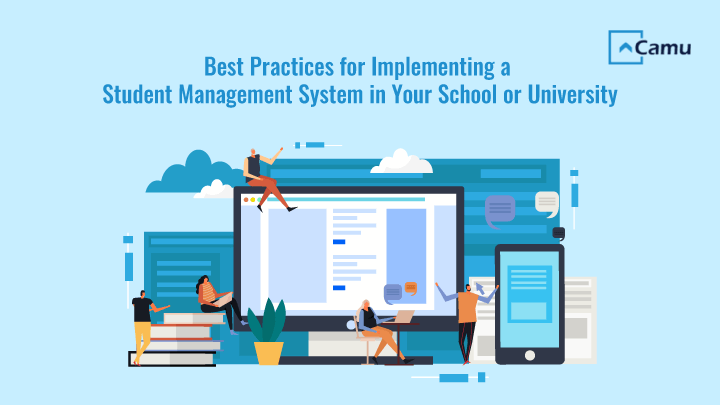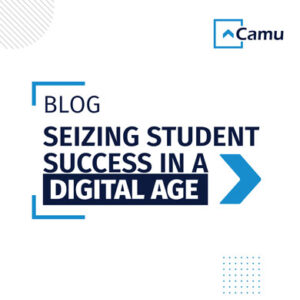
Best Practices for Implementing a Student Management System in Your School or University
Are you tired of keeping track of endless spreadsheets and paperwork just to manage your students’ records? Do you dread the chaos that comes with the start of every school year? Fear not, because implementing a Student Management System (SMS) is the solution you’ve been looking for!
Not only does an SMS streamline administrative processes, but it also eliminates errors and increases efficiency. No more lost records or incorrect data! And the best part? You’ll see a return on investment as the cost of manual record-keeping and paperwork dwindles.
But that’s not all – an SMS provides educators with real-time data and analytics, allowing them to make data-driven decisions and improve student outcomes.
So what are you waiting for? Say goodbye to the chaos and hello to efficiency with Student Management Systems. Read more here on the best practices for implementing an SIS in your educational organization.
Best Practices for Implementing a Cloud-Based Student Information System in Higher Education
Let’s explore some of the best strategies that you will need to follow for a successful implementation of an SIS.
A strong end-user service core is the magic
When implementing a cloud-based Student Information System (SIS) in higher education, having a strong end-user service core is critical to success. This includes not only technical support but also ongoing training and communication with users.
By providing excellent service, institutions can ensure that users feel supported and empowered to make the most of the SIS, leading to a smoother and more successful implementation.
Create a map of the process and assign people who will ensure migration happens
When migrating to a cloud-based Student Information System (SIS) for schools, it’s important to create a map of the process and assign specific individuals who will ensure a successful migration. This includes identifying key stakeholders, such as IT personnel, administrators, and end-users, and outlining their roles and responsibilities.
Additionally, the map should include a timeline for each phase of the migration, along with clear communication channels and contingencies in case of issues or delays. This level of planning and organization can help ensure a smooth and efficient migration to a cloud-based SIS.
Training on a regular basis
Regular training is essential when implementing a cloud-based Student Information System (SIS) in higher education. This includes initial training during the implementation phase, as well as ongoing training for administrators, staff, and end-users.
Regular training can help users stay up to date with the latest features and functionality, ensure that they are using the SIS correctly and efficiently, and address any questions or concerns that may arise. By investing in regular training, institutions can maximize the benefits of their SIS and ensure that everyone involved is confident and knowledgeable about using the system.
Follow-ups
Follow-ups are an important part of ensuring the success of a cloud-based Student Information System (SIS) in higher education. This includes regular check-ins with users to assess their satisfaction with the system, identify any issues or concerns, and offer ongoing support and training.
Additionally, follow-ups can help institutions identify opportunities to optimize their SIS and customize it to meet their unique needs.
Test the SIS occasionally
Testing includes testing the system thoroughly before going live, as well as ongoing testing to identify any issues or areas for improvement. Testing can help institutions ensure that their SIS is functioning properly and that users are able to access and use the system without issue.
Moreover, testing can help identify potential security risks and ensure that the system meets all necessary compliance requirements.
Monitor
Monitoring is crucial in the successful implementation of a cloud-based Student Information System (SIS) software in higher education. This involves tracking system performance and user activity. Monitoring helps educational organizations evaluate whether the system is being fully utilized to its capabilities.
Conclusion
Implementing a powerful student management system in your school or university can bring significant benefits, such as improving operational efficiency, boosting teacher productivity, and enhancing the learning experience of students. With the right strategies and best practices in place, you can maximize the potential of your SIS investment while ensuring it meets the unique needs of your institution.
To get started with SIS, be sure to evaluate various systems and choose the one that provides a comprehensive set of features. Additionally, ensure you motivate faculty to use the system by providing training and streamlining data warehousing processes.
Finally, you should also prioritize student engagement and feedback to ensure that their preferences are taken into account for continuity and success.
Contact us today to get started with SIS and take advantage of these benefits. As an innovative cloud-based Student Information System, Camu offers a user-friendly interface, customizable workflows, and robust reporting and analytics tools. With Camu, higher education institutions can streamline administrative processes, enhance student engagement, and improve student outcomes, making it the best SIS solution in the market.







